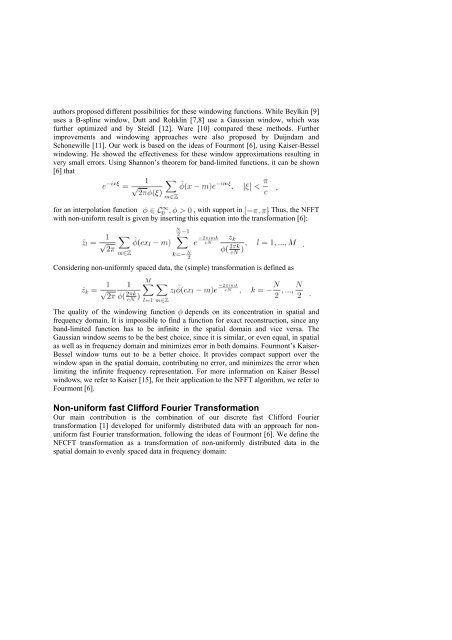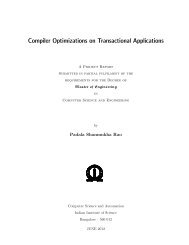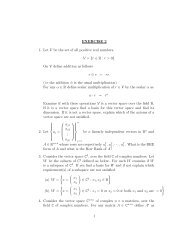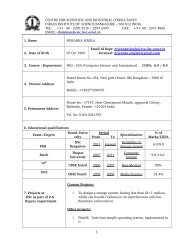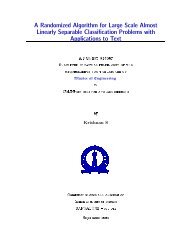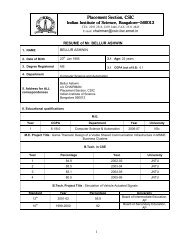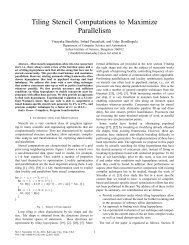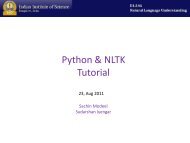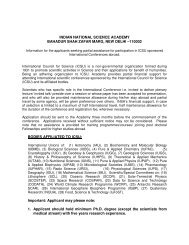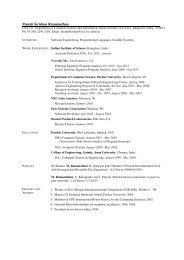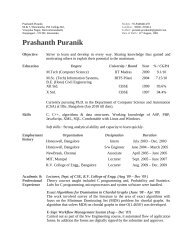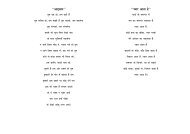Fast Clifford Fourier Transformation for - Computer Science and ...
Fast Clifford Fourier Transformation for - Computer Science and ...
Fast Clifford Fourier Transformation for - Computer Science and ...
Create successful ePaper yourself
Turn your PDF publications into a flip-book with our unique Google optimized e-Paper software.
authors proposed different possibilities <strong>for</strong> these windowing functions. While Beylkin [9]uses a B-spline window, Dutt <strong>and</strong> Rohklin [7,8] use a Gaussian window, which wasfurther optimized <strong>and</strong> by Steidl [12]. Ware [10] compared these methods. Furtherimprovements <strong>and</strong> windowing approaches were also proposed by Duijndam <strong>and</strong>Schonewille [11]. Our work is based on the ideas of Fourmont [6], using Kaiser-Besselwindowing. He showed the effectiveness <strong>for</strong> these window approximations resulting invery small errors. Using Shannon’s theorem <strong>for</strong> b<strong>and</strong>-limited functions, it can be shown[6] that,<strong>for</strong> an interpolation function , with support in . Thus, the NFFTwith non-uni<strong>for</strong>m result is given by inserting this equation into the trans<strong>for</strong>mation [6]:.Considering non-uni<strong>for</strong>mly spaced data, the (simple) trans<strong>for</strong>mation is defined asThe quality of the windowing function depends on its concentration in spatial <strong>and</strong>frequency domain. It is impossible to find a function <strong>for</strong> exact reconstruction, since anyb<strong>and</strong>-limited function has to be infinite in the spatial domain <strong>and</strong> vice versa. TheGaussian window seems to be the best choice, since it is similar, or even equal, in spatialas well as in frequency domain <strong>and</strong> minimizes error in both domains. Fourmont’s Kaiser-Bessel window turns out to be a better choice. It provides compact support over thewindow span in the spatial domain, contributing no error, <strong>and</strong> minimizes the error whenlimiting the infinite frequency representation. For more in<strong>for</strong>mation on Kaiser Besselwindows, we refer to Kaiser [15], <strong>for</strong> their application to the NFFT algorithm, we refer toFourmont [6].Non-uni<strong>for</strong>m fast <strong>Clif<strong>for</strong>d</strong> <strong>Fourier</strong> <strong>Trans<strong>for</strong>mation</strong>Our main contribution is the combination of our discrete fast <strong>Clif<strong>for</strong>d</strong> <strong>Fourier</strong>trans<strong>for</strong>mation [1] developed <strong>for</strong> uni<strong>for</strong>mly distributed data with an approach <strong>for</strong> nonuni<strong>for</strong>mfast <strong>Fourier</strong> trans<strong>for</strong>mation, following the ideas of Fourmont [6]. We define theNFCFT trans<strong>for</strong>mation as a trans<strong>for</strong>mation of non-uni<strong>for</strong>mly distributed data in thespatial domain to evenly spaced data in frequency domain:.


